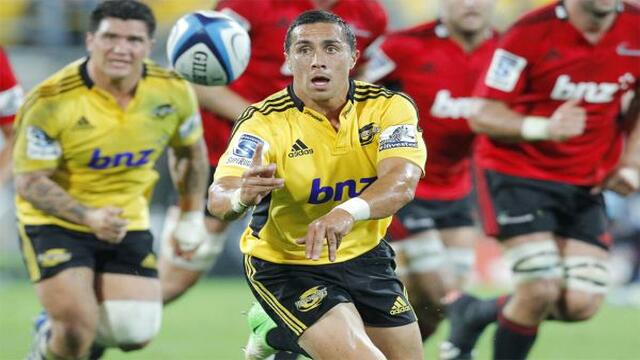I make no apologies for returning to the subject of the pass. It is one of the most beautiful moments in rugby, when done well. Done badly, it is a catastrophe. The pass is also, like so many things in this world, subject to fashion.
Save 50% on an annual subscription to The Rugby Site
At the weekend the Hurricanes decided that TJ Perenara had to go back to school because his pass was slowing down the whole backline. Interestingly the Cheetahs seem to play scrum-half Sarel Pretorius in midfield most of the time, with the exception of the set-piece, because he is such a poor passer (and a very good runner). Sounds like a wing to me.
The man who came into the Hurricanes in place of Perenara was Chris Smylie and I wonder, just wonder, if he might bring the dive pass back into vogue. Back in the sixties and seventies the dive pass was commonplace and a good option for delivering a heavy wet ball when on the move. Then it fell out of favour, almost a badge of shame, a sign that the 9 might be weak off one hand.
But Smylie demonstrated against the Cheetahs as the Canes racked up 60 points, there is much to be said for the dive pass. It tends to be extremely accurate, especially for height, it enables a quick release when the scrum-half is on the move, and the number 9 is harder to scrag when he delivers such a pass. Of course it cuts down options and disguise, but sometimes a quick pass is the best pass. The Canes certainly prospered.
As we have said before, the spin pass is grotesquely over used in rugby and often encourages the passer to chuck the ball too hard and too high. The ordinary spin passer also often takes a bit of wind up and signals his intention with his body position, making him an interception waiting to happen. We saw several of these again at the weekend. We also continued to see top sides – are you listening England – with players who are just plain bad at passing off the left hand.
But there are some very encouraging signs too, particularly in the southern hemisphere. The Canes opening try against the Cheetahs showed the value of quick hands and fixing the defender. Barrett scored the second try with a chip behind the defence, but he had the time to do things perfectly because his scrum-half’s pass was also perfect. A bad pass and Barrett would have had to adjust and the moment would have gone.
The Canes’ third and fourth try were hymns to the pass and both had a dive pass in the sequence. Smylie may not have the length of pass of Will Genia, say, but his precision sure did create time for his backs. A shorter pass in exactly the right place will give the receiver more options than a longer pass that is too high and not right out in front.
FREE VIDEO – Watch Wayne Smith’s ‘Catch & Pass Activities’
Carwyne James would run behind the 71 Lions in practice. Mike Gibson remembered that the paramount objective was “_to put the ball in a catchable position IN FRONT OF THE RECEIVER. He would follow behind us shouting, Think! Think! Think!_’”
Those are Mike’s capital letters, not mine. And I wonder if anyone has ever run behind Mathieu Bastareaud shouting, “_Think! Think! Think!_” The pass he threw in the third minute of the game against Ireland exemplified everything that is wrong about modern pass thinking. Having made a break Bastareaud did not run to find his support, but just hurled a long, high, spin pass to the winds, his body shape hopelessly wrong, the pass a mile forward.
I wonder what Chris Smylie would have made of that. Not a lot, I reckon.


